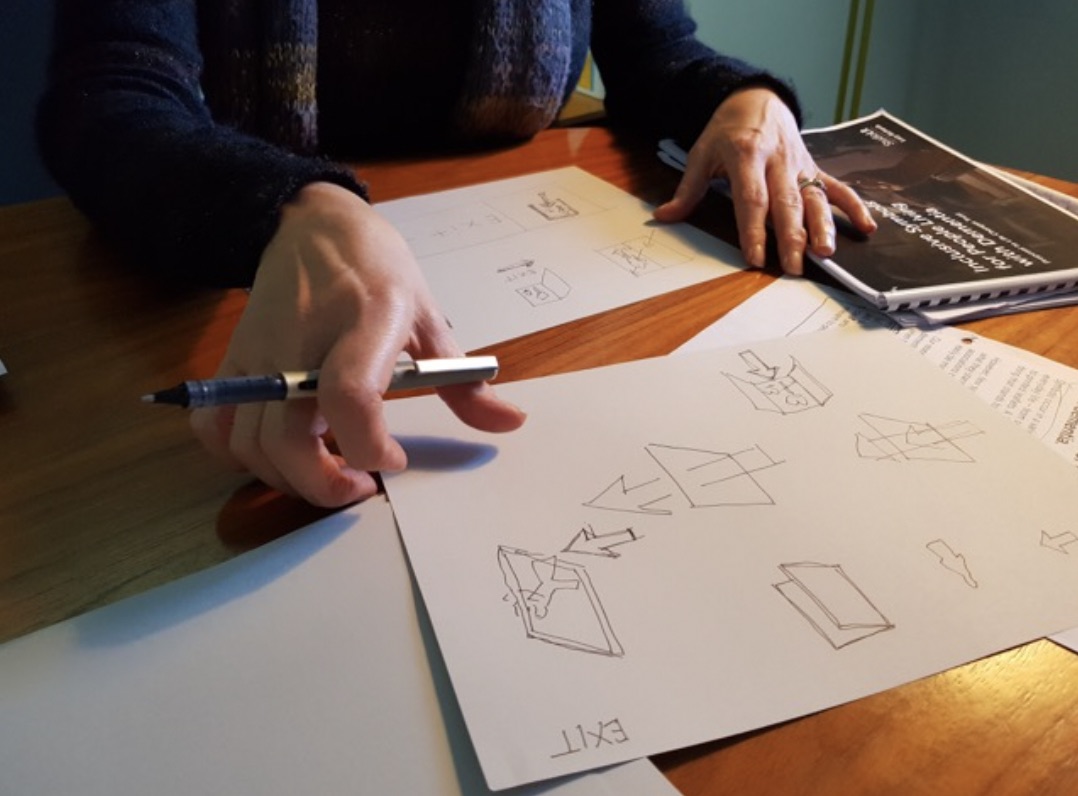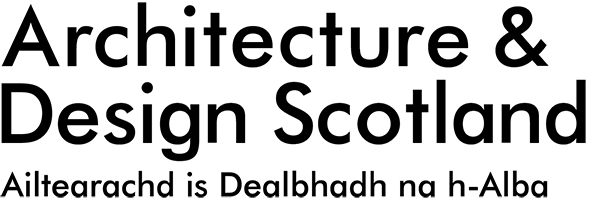Making public places better for everyone

We are developing and inviting a conversation on town centre living and a caring place through our social media channels and on this website. Lucy Richards, Founder of Studio LR, talks about her work on researching and re-designing everyday signage and symbols in our public spaces. This blog relates to principle seven: accessible and diverse amenities and services.
Making public places better for everyone
An ageing population is fast becoming one of the biggest challenges facing society.
Getting out and about and being part of community life is important for everybody’s wellbeing. But for people affected by dementia, and the cognitive challenges that can bring, getting around public places can be a daunting prospect. Confusing and inconsistent signage and symbols are commonplace, making life even more difficult for people.
So, we’re finding opportunities for design to help people with dementia find their way with confidence – encouraging a greater sense of independence.
Inspiration
An idea was inspired by Henry Rankin (Chair of the Scottish Dementia Working Group) in a signage workshop when he pointed out that the male and female toilet symbols often appear ambiguous and their meaning is difficult to remember. The toilet symbol is a ‘learned’ symbol that doesn’t visually represent the function of the room.
We wondered if any other commonly seen, everyday symbols might be confusing or misunderstood by people with dementia. From signs in the train station, to buttons on websites – symbols appear in a variety of contexts in our day-to-day lives.
We started out by testing 15 commonly seen symbols with groups of people with dementia to gauge their understanding of the meanings.

The results clearly demonstrated an inconsistent understanding of the variety of symbols presented. A literal translation of a symbol was common and a lack of associations and relevance to people’s present day lives was also a factor impacting a symbol’s degree of success. The conclusion is that symbols are not clearly communicating what they stand for.
Progress
With the benefit of focus group feedback, our design team has developed a new design for each of the symbols. Each symbol is currently being tested by groups of people with dementia living all over the UK.

Design improvements will continue, leading to a final testing stage in the form of ‘accompanied journeys’ – walking alongside a person with dementia on journeys through different public places, guided by the new symbols applied as wayfinding.
Our goal is to have the new dementia symbols ready towards the end of 2018, free to download and use by anyone working to make public places easier to navigate.
The new, improved set of symbols will be more effective for everyone right across society, in all public places – clear, easy to understand and relevant to people’s everyday lives.

About the project
In 2016 the Life Changes Trust funded StudioLR to conduct a research project across Scotland with a ‘Life Changes Trust Award’, followed by additional funding in 2017/18 to re-design and evaluate everyday symbols. The project is expected to conclude with a new set of symbols made available free for all to use in December 2018. The Life Changes Trust is funded by the Big Lottery Fund. StudioLR worked with support from the University of Edinburgh.
About Studio LR
We’re ambitious to tackle society’s big challenges – always looking for ways we can make a positive social impact and improve everyday experiences for people from all walks of life. For further info see our inclusive symbols blog at www.StudioLR.com
Follow on Twitter @StudioLR_Lucy
All image credits: Studio LR
Share your stories on a caring place
We are developing and inviting a conversation on a caring place through our social media channels and on this website. If you'd like to share you knowledge and experiences of what it takes to design for a caring place, get in touch.
